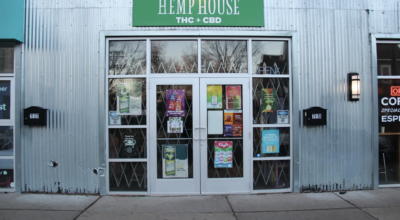Farmers expect good yield despite cooler weather
Published 7:07 pm Monday, September 4, 2017
Warm weather needed in stretch before harvest
By Sarah Kocher
Area farmers are hoping the weather will do one thing this harvest season: turn up the heat.
According to corn and soybean farmer Jerry Demmer, the cooler temperatures in August have been a little below normal.
Jared Knutson grows corn and soybeans with his father and three brothers between Hartland and Manchester. He had approximately 130 farmers over for a field day last Wednesday, and said the thought is pretty consistent among the community.
“We need some heat to finish the crop off and we need some warmer temperatures so we aren’t dealing with wet corn to dry,” Demmer said. Demmer, who has been farming for 45 years, estimates that this could push harvest time back. Both Demmer and Nick Schiltz, faculty professor and assistant director for the Center of Ag and Food Science Technology at Riverland Community College, gave a similar estimate on how far back that could be.
“We’re probably about a week behind the 15-year average,” Schiltz said.
According to Schiltz, there’s a sweet spot of 18 to 20 percent moisture content for corn at harvest time. For growers favoring hybrid varieties that look to maximize on hot weather, warm autumns are a boon, and the past few years have been bountiful because the weather has delivered.
“We’re sitting pretty well,” Schiltz said. Nevertheless, “we could certainly use some heat right now. … If we don’t have those heat units, crops might not reach full potential.”
Demmer said if the natural drying doesn’t occur in the fields, farmers may have to do more artificial drying.
“If we need to dry corn this fall, we’re going to be looking at pretty high costs — not only for the need to dry it, but from the cost of using a product,” Schiltz said. That product is energy, and Schiltz estimates that ongoing issues tied to Hurricane Harvey could have an impact in raising those costs.
Nonetheless, Demmer, Schiltz and Knutson all estimate this year’s corn yield will be slightly above normal.
“I feel like we got our seed planted with pretty good timing,” Knutson said. “Overall, I think the season has been good. … I think if we avoid an early frost in September, our corn could finish pretty strong.”
Additionally, although Knutson has had some trouble with mold in his soybean crop — also an effect of cooler, wetter weather — he didn’t have to spray for bugs.
Schiltz has a toolbox of reasons why he estimates an above-average yield: technology that allows farmers to better access real-time weather influences on their fields, product selection, better hybrids, better nutrient management, new herbicides on the market and, as Knutson said, fewer issues with insects. Advances like these can help farmers who are asking themselves how to save money as well as grow more corn while the prices of commodities are down, Schiltz said.
But for Demmer, it comes back to one thing.
“It’s always a weather factor,” he said. “You never know what type of weather we’re going to see. … It’s a waiting game.”
And that, Demmer said, is “just the way it is.”
“Every year’s different, and farmers deal with what they get thrown at them,” he said. “It’s always interesting in farming. That’s what keeps us in it, I think.”
Knutson offered a similar sentiment.
“There’s just so much unforeseen risk involved in farming, but that’s a little bit of the adrenaline rush,” Knutson said. “And, there’s that trust factor, saying, ‘I’m not in control.’”






